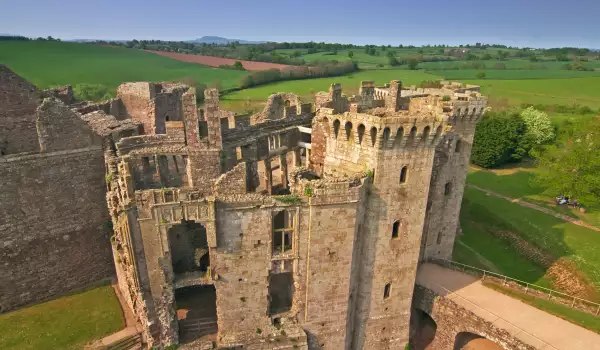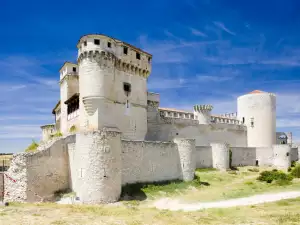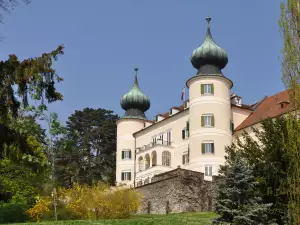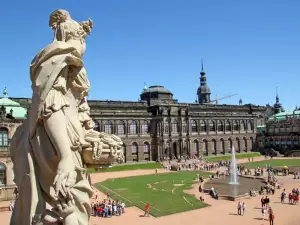Raglan Castle

Raglan Castle differs from all other palaces in the territory of Wales. Among the medieval buildings in the country there are none which hold such massive polygonal towers like Raglan.
This fortress is situated in the village of Raglan in the county of Monmouthshire, which occupies the southeast of Wales. The original Raglan Castle was built there in the 12th century, but the ruins we see today are a consequence of construction in the 15th century.

Early Raglan had built there a Norman castle, and even before that it was of Roman fortifications. Parts of them can still be seen in the beautiful medieval palace. The height and bloom period of Castle Raglan was experienced in 15th and 16th century, when the official mansion was held under the surname of Herbert. However, Raglan Castle suffered hard times after a long siege during the English Civil War.
The basis of current Raglan was placed in 1435 by Sir William Thomas, who married the heiress of the castle Elizabeth Bloet.
After the death of Thomas his son - William Herbert completed the construction of Raglan Castle. There is still dispute of who exactly built the big tower, which is the most famous feature of the castle.
It became the home of Henry Tudor, known later as King Henry VII, who was thrown in jail by William Herbert during the War of the Roses. In the 18th century and 19th century, after the disastrous Civil War, the Raglan castle was in ruins and so it became a convenient source of building materials for the local population.
Raglan was built mainly from several sandstone rocks. Today views of the palace clearly underline the reddish hue of the stones from which it was built in the 15th century. The main construction material is pale yellow sandstone, which was taken from around the river Wye, located three kilometers from the fortress. The other kind of material is red-brown sandstone, which Tudor used during the restoration of Raglan castle.
Today the approved and most remarkable is the Great Tower, or known as the Yellow Tower of Gwent. It is surrounded by a moat and a fence wall, which today flourishes with beautiful gray flowers. You can tell the influence of the French architectural style of the tower as the tower and pit are outside the main part of the castle.
It was built in an rectangular shape and at the sides of the castle remain two picturesque courtyards. On entering the Castle you can see a White Gate, which dates from the 16th century.















